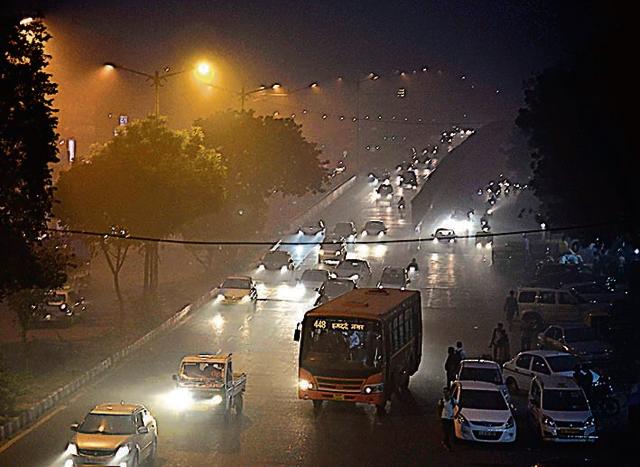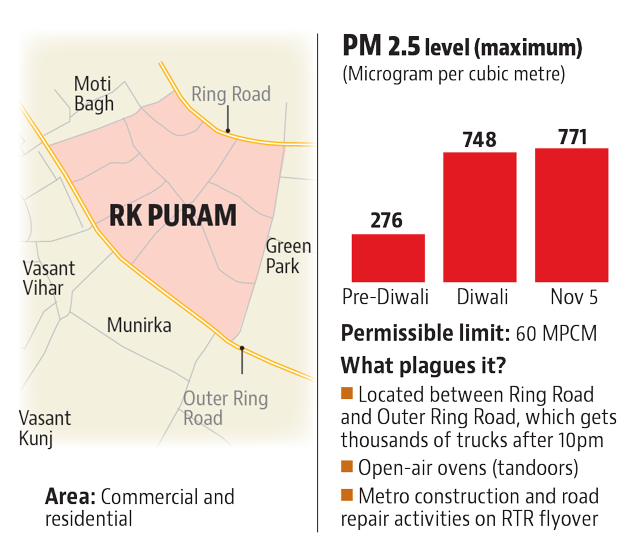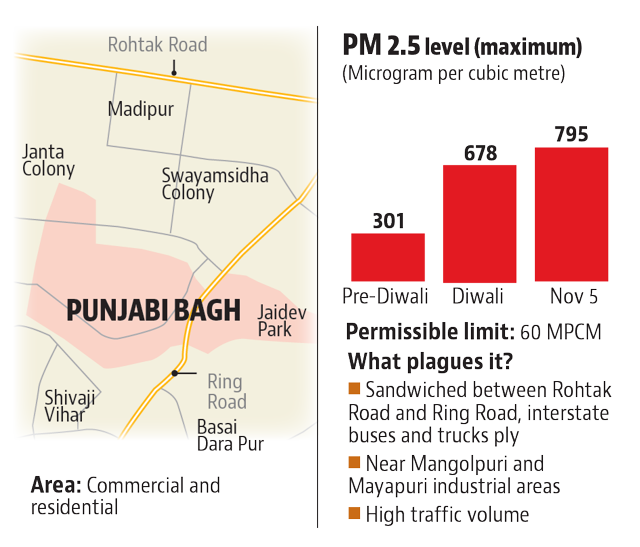Surviving Delhi’s three most polluted neighbourhoods
Hindustan Times profiles three neighbourhoods topping the pollution chart, where residents breathe poisonous air almost every day
Hindustan Times profiles three neighbourhoods topping the pollution chart, where residents breathe poisonous air almost every day.

Anand Vihar: Where bus terminal, landfill, industries wreak havoc
It was a regular day for commuters at the Anand Vihar bus station in east Delhi. The toxic smog in the air had done little to disrupt their Saturday routine. People had set out with scarves and handkerchiefs around their noses.
Anand Vihar is one of the most polluted spots of Delhi. In the last week, the average air quality in the observatory here was consistently in the ‘severe’ category, around the 500 mark. This is the highest in the air quality index.
“We cannot sit at home fearing pollution,” said Manoj Tiwari, a resident of Shreshtha Vihar, a residential neighbourhood two kilometres from the bus terminal. Residents say two to three people in each family are suffering from respiratory problems and minor allergies this season.
The observatory at Anand Vihar records pollution levels within a 15-km radius. Localities such as Mayur Vihar Phase 1, 2 and 3, New Ashok Nagar and Akshardham are in its range.
The hundreds of diesel-belching interstate buses that enter the terminal make the air in the area worse than the rest Delhi . Other areas suffer due to the proximity.
“Proximity with Ghaziabad makes the situation worse. On the Uttar Pradesh side, you have diesel buses running, which add to the pollution. The people here are the worst hit by this year’s spell,” said Raj Rajeshwari, a housewife.
She said her seven-month daughter has had severe chest congestion after Diwali day. Every four hours, Nikhita is advised nebulisation by the doctor.

Though the government has made CNG mandatory in all the public transport in Delhi, it has no control over transport buses entering from other states where clean fuel is still not mandatory.
The chemical residue from factories and printing press in Sahibabad and fires at the Ghazipur landfill make the air in the surrounding areas worse.
“The sulphur stench from the landfill is something we live with every day. Every now and then, fires spark there. Unless they get out of hand, no authority even bothers to control them. Patches at the landfill keep burning all night and smoke envelopes the roads,” said Shaukeen Mishra, a resident of Mayur Vihar phase-II.
She said though factories have been “moved out of the city”, it is still affecting its residents. “You might have moved them t from the heart of the city, but it is still affecting Delhiites,” she said.
RK Puram: Sandwiched between two ring roads and metro work

Away from the commercial hustle and bustle, RK Puram looks like a peaceful, green neighbourhood of central government employees.
This colony is, however, one of Delhi’s most polluted spots where residents breathe toxic gases almost every day.
“People are lining up local dispensaries run under the central government health scheme (CGHS) with complaints of cough and cold. It has been over a week for many people but the allergies persist,” said Sarvesh Tripathy, president of the resident welfare association (RWA), RK Puram, Sector 7.
The neighbourhood, which comprises 12 sectors, is sandwiched between Ring Road and Outer Ring Road, through which thousands of diesel trucks and other commercial vehicles move after 10pm every night.
On Saturday, the levels of particulate matter finer than 2.5 micrometers crossed the 700-mark. The acceptable level is 60 micrograms per cubic meter.
Ongoing metro construction at Moti Bagh, RK Puram, Munirka and Vasant Vihar, and work on a flyover at Rao Tula Ram Marg near Malai Mandir Road, added to the pollution levels.

Residents said the skies become hazy at night and it becomes difficult to breathe. Despite resistance by residents, the government gave the green signal to the construction of a flyover along Outer Ring Road.
Several type-4 quarters, three bedrooms, adjacent to Ring Road, were pulled down to make space for metro construction activities.
“When metro construction started at the Moti Bagh intersection, we faced major difficulties. Demolition activities would start at night and the entire area would be filled with construction dust. During that period we would all pack up and get inside our houses by 8pm because after that it was impossible to stay out,” said Sareeta Upadhyay, a resident of sector-12.
Though the situation is not that bad, dust from the construction site still bothers residents.
“Our house was less than 50 steps away from the construction site. But we were still not relocated. The government does not care even if people die,” she said.
Several restaurants that use open air clay ovens or tandoors in their premises are contributors to the pollution. By evening, the smoke from these tandoors engulfs the nearby areas.
Thousands of trucks pollute Punjabi Bagh every day

Punjabi Bagh in West Delhi suffers from a major disadvantage when it comes to its location. The Rohtak Road crosses the area from one end and the Ring Road from another. This adds to the high pollution concentration here.
Senior Delhi Traffic Police officials said that every day over 10,000 trucks are diverted from the city’s entry point via Rohtak Road to the Ring Road. Environmentalists have often pointed out that the trucks that enter the city are often poorly maintained and have high emissions.
“The noise and the emissions from trucks are what we wake up to every day. The children step out of the house with handkerchiefs on their noses. I am relieved to see my kids go from home. At least they are safer in school,” said Ankita Malhotra, a 36-year-old housewife, living in C-Block Punjabi Bagh.
She said when the movement of the truck is stopped during the day, the vehicles within the area start.
“To avoid the jams on the Ring Road, vehicles often take the internal road and clog it too. We have written to the RWA several times to keep the colony gates locked for outsiders. Why should we inhale vehicle smoke despite sitting at home,” she said.
Punjabi Bagh is also less than 30 minutes away from the industrial areas in Mayapuri and Mangolpuri.
The Mangolpuri industrial area has units ranging in furniture and electric supplies while Mayapuri majorly deals with motor parts and plastic crockery. These small units start their operations majorly after 9pm to escape fines.
The walls of these units have a thick layer of soot on it which is a tell-tale sign of the emissions.
“My mother is 75 years old and every winter I have to drop her to my brother’s place in Hyderabad because she is asthmatic and her breathing gets worse here. We have seen how this pollution can make living in the city hell. I work here and my children are studying so we have no other option but to stay. But seeing such smog makes me worry for my kids’ health,” said Pranjali Kapoor, an IT engineer living in the area.




